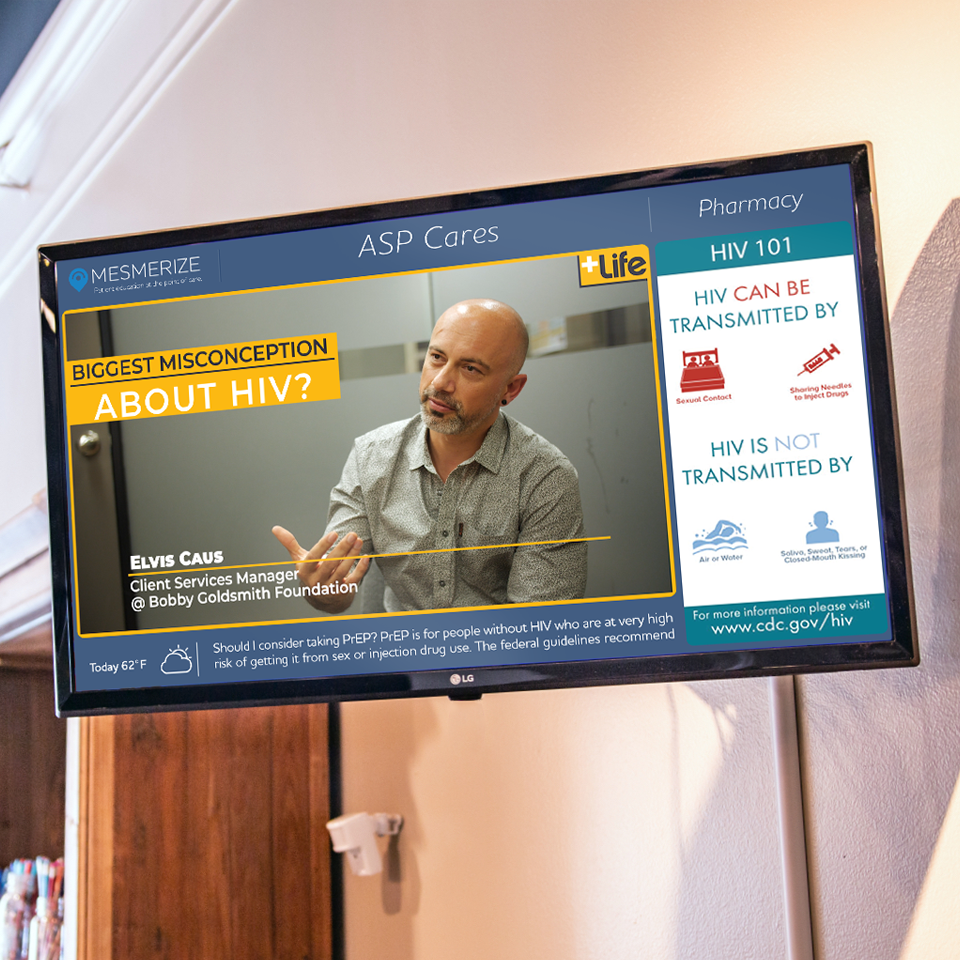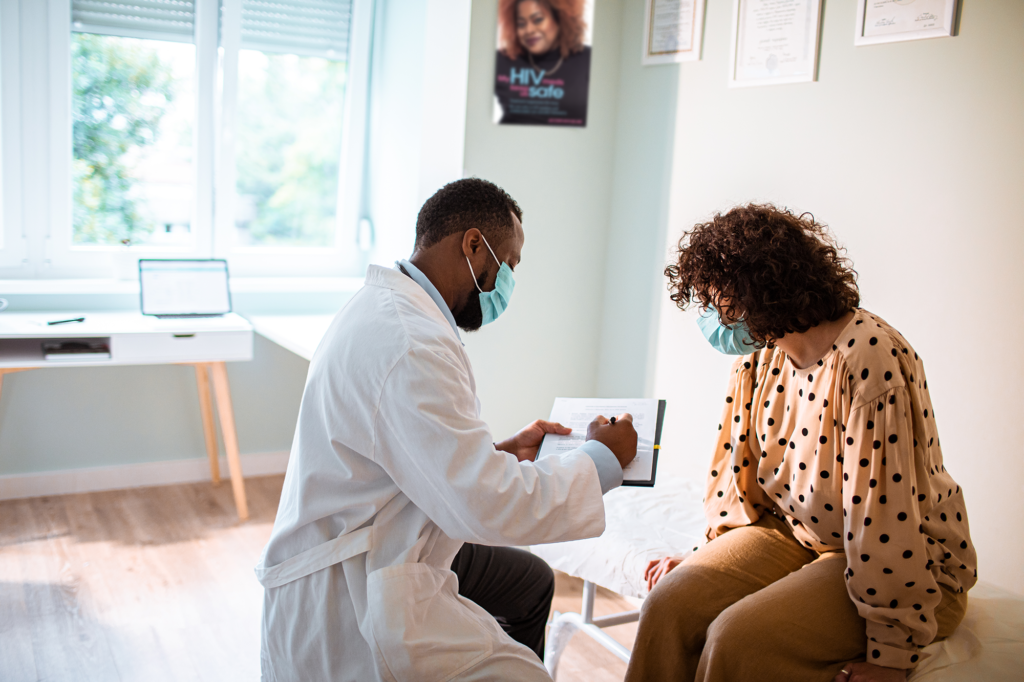Sponsored Content
Samantha Brown, Director of Business Development at Mesmerize, discussed the impacts COVID-19 has had on their business in a recent interview with Bob Ehrlich, Chairman & CEO of DTC Perspectives. She shares how Mesmerize used this time to focus on expanding its point of care footprint and establishing new partnerships, while continuing to educate and engage consumers via Mesmerize’s vast network of essential businesses.

Bob Ehrlich: How has COVID-19 affected the point of care (POC) industry?
Samantha Brown: While COVID-19 affected in-office visits early on in the pandemic, we’ve already seen the vast majority of our specialty networks return to pre-COVID traffic levels or beyond. COVID-19 highlighted the need for innovative, dynamic solutions, like Mesmerize’s digital TV screens, at the point of care. Our digital TV screens allow us to continue delivering dynamic educational content to the offices within our network and serve as a powerful channel to activate on behalf of COVID-19 consumer education, disseminating trusted information by partners, such as the CDC and WHO. In order to maintain safe social distancing, many practices no longer allowed non-essential visits, including pharmaceutical reps, to their offices. Our digital network affords advertisers the ability to reach both patients and physicians with their brand’s messaging in a safe, efficient, and effective way. The addition of QR codes to our printed media allows for patients to scan a QR code on the physical materials within an office and interact with that same content digitally on their mobile device. The ability to access this content digitally allows patients to bring this information home with them and share it with their caregivers and/or loved ones.
The role of the pharmacist has also evolved dramatically as they continue to serve on the front lines of the COVID-19 epidemic. Local pharmacists see more patients on a daily basis than any other healthcare provider, and that’s proven to be particularly true in the wake of COVID-19, as pharmacists were licensed to administer COVID-19 tests, and now the COVID-19 vaccine. COVID-19 highlighted the pharmacist’s role in connecting patients and customers with access to care, increasing awareness of the wide range of vaccines and immunizations pharmacists are able to administer, including COVID-19, as well as protection against HPV, Hepatitis, Flu, and more. At a time when pharmacists were seeing increasing foot traffic and patient visits, Mesmerize’s TV screens and other point of care tactics played a large role in educating consumers and encouraging them to speak with their pharmacist, a reliable source of counseling and information for general health and wellness concerns, as well as COVID-19.
Bob: It’s been impressive to see what Mesmerize has been able to accomplish this past year, despite COVID-19. You’ve been busy lately growing your network, most recently with partnerships with Benasource, ASP Cares, Gaudenzia, and GMHC. What do these partnerships mean to brands working with Mesmerize?
Samantha: Despite the challenges presented by COVID-19, we made a conscious decision as an organization to use this time to double down our focus on network expansion and re-engaging new partnership opportunities. In 2019, we acquired a digital network of independent pharmacies and have been working to expand upon the existing network since. In 2020, we partnered with ASP Cares and Benasource, installing Mesmerize’s Digital TV screens in all ASP Cares U.S. locations and Benzer Pharmacy locations. Specialty pharmacies have unique expertise and experience treating a multitude of conditions including: HIV/AIDS, Hepatitis, Rheumatology, Oncology, Cardiovascular Disease, Gastroenterology, Addiction Management, and more, making them a critical venue for reaching patients with these conditions.
The team worked tirelessly to expand our digital network beyond the pharmacy, first with a partnership with Gaudenzia Addiction Treatment & Recovery Services, followed by a partnership with GMHC, the world’s first HIV/AIDS Services Organization (ASO). Our partnership with Gaudenzia allows us to provide best-in-class patient education across their drug and alcohol treatment, mental health, and HIV/AIDS programs, reaching nearly 20,000 individuals annually. Partnering with renowned organizations like Gaudenzia and GMHC, which are vital to improving the community’s health and helping them to achieve a better quality of life, helps Mesmerize fulfill its mission to connect individuals, families, and communities affected by HIV and other infectious disease and/or mental illness to accessible care, treatment, and education. Mesmerize is excited to work with our new partners to uplift those affected by these diseases and we look forward to continuing to work together to address the underlying causes of new diagnosis, combat stigma and discrimination, and promote healthy behaviors. Adding our digital TV screens to these locations allows us to effectively reach and connect with affected individuals and communities, and offers advertisers a unique opportunity to reach their target audiences at the places they are seeking care.

Bob: Clearly, 2020 was a very busy year for Mesmerize. What’s next in the pipeline?
Samantha: We continue to actively seek out opportunities to grow our pharmacy network and remain heavily involved with the HIV/AIDS community. 2021 growth will focus on expanding into additional Community-Based Organizations and AIDS Service Organizations, increasing our reach across these organizations that are vital to improving people’s health and helping them to achieve a better quality of life. We have a lot of exciting things in the pipeline in terms of content, and our full-service digital signage studio is working around the clock to produce best-in-class patient education speaking to HIV/AIDS and infectious disease specifically, in addition to general health and wellness and other condition-specific content. After seeing great success building out our digital network of infectious disease offices, AIDS Service Organizations, and Community-Based Organizations, we look forward to rolling out our digital network in specialty doctors’ offices, aligning with client-demand and connecting patients and physicians with valuable information and resources speaking to a multitude of conditions, including: Respiratory/COPD, Rheumatology, Oncology, Gastroenterology, and more. We are very excited about our most recent partnership with Quest Diagnostics labs, reaching nearly 8.5 million monthly viewers at over 2,000 Quest Diagnostics sites nationwide. We’ve also begun working with major supermarket/grocery retailers, installing digital TV screens within their on-site pharmacies. 2020 was a busy year and we expect 2021 to be the same!
Bob: How is Mesmerize able to utilize its vast out-of-home (OOH) network at point of care, point-of-sale, transit, and other specialty areas to bring more value to clients?
Samantha: In addition to point of care media, Mesmerize has a vast network of transit and place-based media opportunities, serving as a one-stop shop for cross-channel advertising that allows our advertisers to reach consumers at multiple touchpoints along their out-of-home journey. Our larger OOH network affords advertisers the ability to reach consumers non-disruptively at every point throughout their daily lives, from their commute to and from the doctor’s office via our network of fixed-route and paratransit buses, to their visit to the pharmacy, grocery, or convenience store following their doctor’s office, ASO, or community-based organization visit. Mesmerize’s place-based opportunities ensure our advertisers are reaching their target audiences on days they are not visiting their healthcare practitioner, via advertising in cafes, coffee shops, financial service centers, laundromats, restaurants, and more. When stay-at-home orders were issued and businesses were forced to close as a result of COVID-19, Mesmerize’s point of care, transit, and financial service networks were deemed essential services and remained open for business, continuing to serve as vital touchpoints for reaching consumers.



